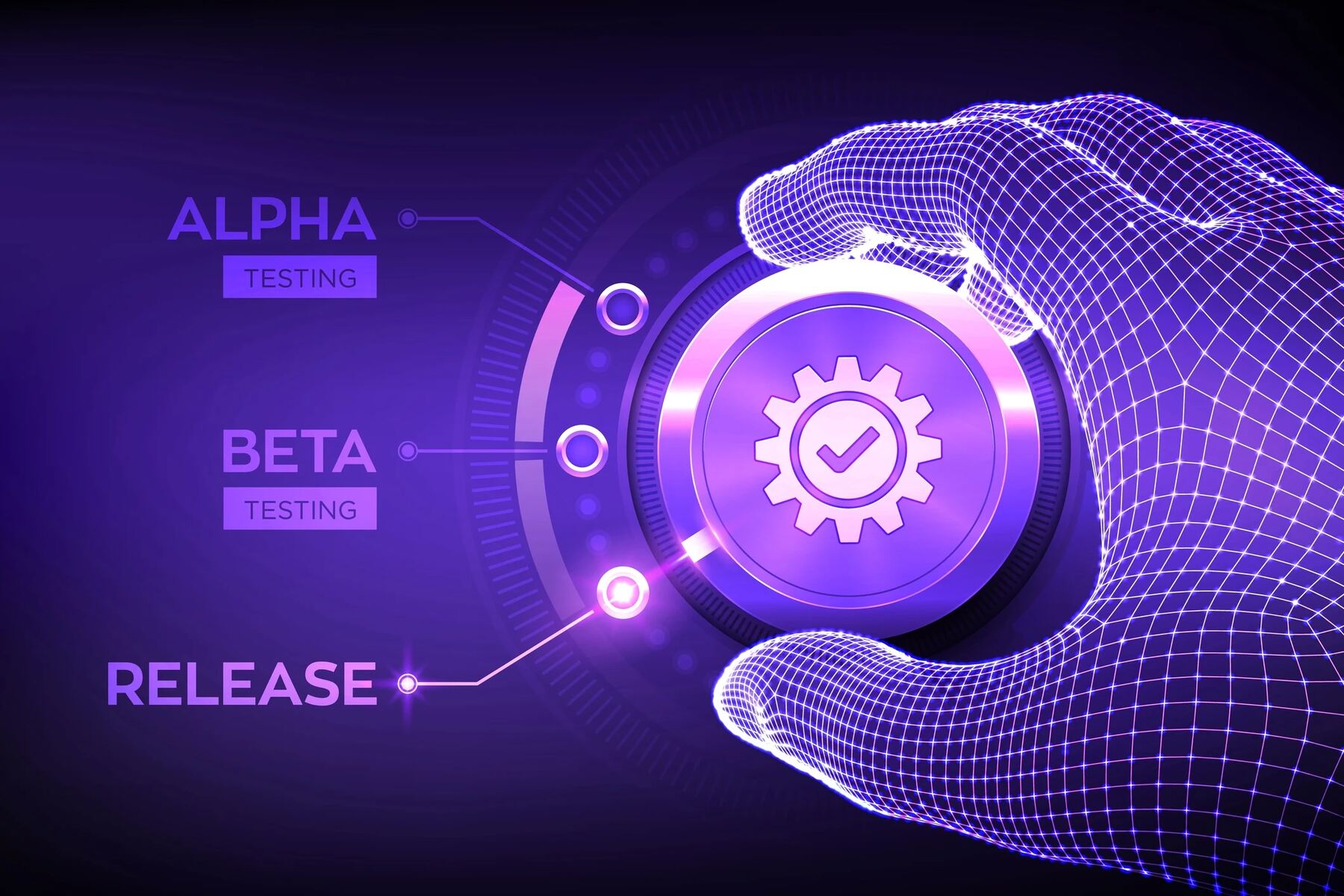Introduction
Welcome to the world of software testing, where the aim is to ensure the delivery of high-quality and bug-free applications. Over the years, software testing methodologies have evolved dramatically, and today we find ourselves at the forefront of a technological revolution – Machine Learning.
Machine Learning, a subset of Artificial Intelligence, has become a game-changer in various industries, and software testing is no exception. By leveraging the power of Machine Learning algorithms and models, testers can enhance their testing processes, improve efficiency, and uncover hidden patterns and insights.
But what exactly is Machine Learning?
Machine Learning is a branch of AI that enables computer systems to learn and make decisions without being explicitly programmed. Through the use of statistical techniques and algorithms, computers can analyze large amounts of data, identify patterns, and make predictions or take actions based on the learned information.
So, how can Machine Learning be used in software testing?
The integration of Machine Learning in software testing brings numerous benefits, such as:
- Increased Efficiency: Machine Learning algorithms can quickly analyze vast amounts of test data, reducing the time and effort required for manual testing.
- Improved Test Coverage: By analyzing historical data, Machine Learning models can identify areas of the application that require more testing, ensuring comprehensive coverage.
- Early Detection of Bugs: Machine Learning techniques can help identify potential defects and anomalies in the early stages of development, enabling prompt resolution before they escalate.
- Optimized Test Execution: Machine Learning can prioritize test cases based on criticality, business impact, and code changes, ensuring that resources are allocated effectively.
- Enhanced Defect Prediction: By analyzing historical defect data, Machine Learning models can predict the likelihood of future defects, helping testers focus on high-risk areas.
Moving forward, we will explore various Machine Learning techniques that can be applied to software testing, enabling testers to unlock the full potential of this revolutionary technology.
What is Machine Learning?
Machine Learning is a subset of Artificial Intelligence (AI), focused on developing algorithms and models that enable computer systems to learn and make predictions or take actions without being explicitly programmed. It is a powerful tool that has revolutionized various industries, including software testing.
At its core, Machine Learning involves training algorithms on large datasets and using statistical techniques to identify patterns and make predictions or decisions. These algorithms are designed to learn from data, adapt to changing situations, and continuously improve their performance over time.
There are three main types of Machine Learning:
- Supervised Learning: In supervised learning, the algorithm is trained on a labeled dataset, where the input data is accompanied by corresponding output labels. The algorithm learns to predict the output labels for new, unseen data based on the patterns it learned from the training data.
- Unsupervised Learning: Unsupervised learning involves training algorithms on an unlabeled dataset, where the input data does not have corresponding output labels. The algorithm learns to discover patterns and relationships in the data without any predefined categories.
- Reinforcement Learning: Reinforcement learning follows a reward-based approach. The algorithm interacts with an environment and learns to take specific actions to maximize rewards or minimize penalties. Through a trial-and-error process, the algorithm improves its performance by learning from feedback.
Machine Learning algorithms can be further categorized into various types, such as decision trees, neural networks, support vector machines, and random forests. Each algorithm has its strengths and weaknesses, making it suitable for different types of problems and data.
In software testing, Machine Learning techniques can be applied to various aspects of the testing process, such as regression testing, test prioritization, test automation, defect prediction, and anomaly detection. By harnessing the power of Machine Learning, testers can improve the efficiency, accuracy, and effectiveness of their testing efforts.
Machine Learning is a rapidly evolving field, with advancements being made continuously. It is crucial for software testers to stay updated with the latest trends and techniques in Machine Learning to leverage its full potential in software testing.
Benefits of Machine Learning in Software Testing
Machine Learning has emerged as a powerful tool in software testing, offering a range of benefits that significantly enhance the testing process. Let’s explore some of the key advantages of incorporating Machine Learning in software testing:
- Increased Efficiency: Machine Learning algorithms can analyze large amounts of data quickly and accurately, reducing the time and effort required for manual testing. This allows testers to focus on more critical tasks and accelerate the overall testing process.
- Improved Test Coverage: Machine Learning models can identify areas of the application that require more testing. By analyzing historical data and considering factors such as code complexity and customer usage patterns, the models can provide insights into testing gaps and ensure comprehensive coverage.
- Early Detection of Bugs: Machine Learning can help identify potential defects and anomalies at an early stage of development. By analyzing patterns in historical data and monitoring performance metrics, Machine Learning models can predict and flag potential issues before they manifest, allowing for timely resolution.
- Optimized Test Execution: Machine Learning can prioritize test cases based on factors such as criticality, business impact, and code changes. This enables testers to allocate testing resources effectively and focus on the areas of the application that are most likely to have bugs or require extensive testing.
- Enhanced Defect Prediction: By analyzing historical defect data, Machine Learning models can predict the likelihood of future defects. This helps testers identify high-risk areas that require special attention and allocate resources accordingly, thus improving the overall software quality.
- Anomaly Detection: Machine Learning can identify abnormal behavior or outliers in the testing process. By establishing baseline patterns and monitoring deviations, Machine Learning algorithms can pinpoint anomalies, enabling testers to investigate and address potential issues.
These benefits not only enhance the efficiency and effectiveness of the software testing process but also contribute to the overall quality of the software. By leveraging Machine Learning in software testing, organizations can reduce costs, expedite release cycles, and deliver highly reliable and user-friendly applications.
However, it is crucial to note that while Machine Learning brings significant advantages to software testing, it is not a complete replacement for manual testing or human expertise. Human intelligence and domain knowledge are still invaluable in analyzing results, making critical decisions, and ensuring the overall quality of the software.
Types of Machine Learning Techniques Used in Software Testing
The integration of Machine Learning in software testing has paved the way for various techniques that improve the efficiency and effectiveness of the testing process. Let’s explore some of the key Machine Learning techniques commonly used in software testing:
- Regression Testing: Regression testing involves retesting the modified parts of an application to ensure that the changes do not introduce any new defects. Machine Learning algorithms can analyze historical test data and identify test cases that are most likely affected by code changes. By prioritizing and automating the execution of these test cases, testers can focus their efforts on areas that have a higher probability of regression issues.
- Test Prioritization and Optimization: Machine Learning can help prioritize test cases based on factors such as business impact, criticality, and code changes. By analyzing historical data and learning from past test results, Machine Learning models can predict the likelihood of failures and determine the optimal order in which test cases should be executed. This ensures that critical areas of the application are tested thoroughly and important issues are identified early.
- Test Automation: Machine Learning can play a vital role in test automation by assisting in test script generation, maintenance, and execution. By analyzing existing test scripts and their outcomes, Machine Learning algorithms can identify patterns, suggest improvements, and even generate new test scripts automatically. This helps streamline the test automation process and saves time and effort for testers.
- Defect Prediction and Prevention: Machine Learning models can analyze historical defect data, including the characteristics of reported defects and the code changes associated with them. Based on this analysis, the models can predict the likelihood of future defects in different areas of the application. Testers can then prioritize testing in those areas, enabling proactive defect prevention and reducing the number of defects that reach production.
- Anomaly Detection: Machine Learning techniques can identify abnormal behavior or anomalies in the testing process. By establishing baseline performance metrics and continuously monitoring test results, Machine Learning algorithms can detect deviations from expected patterns. Testers can investigate these anomalies and identify potential issues or defects that require attention.
These Machine Learning techniques not only improve the efficiency and effectiveness of software testing but also help testers in making informed decisions, prioritizing their efforts, and proactively preventing defects. However, it is essential to ensure the quality and accuracy of the training data used to develop Machine Learning models to maximize their effectiveness in the testing process.
Regression Testing
Regression testing is a critical aspect of software testing that ensures that changes or modifications made to an application do not unintentionally introduce new defects or regressions. It involves retesting the impacted parts of the software to verify its continued functionality and stability.
Machine Learning techniques can significantly enhance the efficiency and effectiveness of regression testing. By analyzing historical test data and learning from previous test results, Machine Learning algorithms can identify the test cases that are most likely to be affected by code changes.
With this information, testers can prioritize and automate the execution of these critical test cases. By focusing their efforts on the areas that have a higher probability of regression issues, testers can ensure thorough testing while optimizing resource allocation.
Additionally, Machine Learning can aid in the creation and maintenance of regression test suites. By analyzing existing test scripts and their outcomes, Machine Learning algorithms can identify patterns and suggest improvements. They can even generate new test cases automatically based on the patterns observed in the data. This accelerates the test script creation process and reduces the manual effort required for test script maintenance.
By leveraging Machine Learning in regression testing, organizations can detect and address regression issues efficiently. The identification of regression-prone areas allows testers to apply targeted testing strategies and mitigate any potential risks early in the development process.
However, it is essential to note that Machine Learning is not a substitute for thorough manual testing. Testers still need to use their domain knowledge and expertise to analyze the results and ensure the overall quality of the software.
Test Prioritization and Optimization
Test prioritization and optimization are crucial aspects of software testing that help ensure the most critical and high-impact areas of an application are thoroughly tested. Machine Learning techniques play a significant role in improving the efficiency and effectiveness of test prioritization and optimization.
Machine Learning algorithms can analyze historical test data, including test results and criticality factors, to identify patterns and trends. By learning from this data, the algorithms can predict the likelihood of failures and determine the optimal order in which test cases should be executed.
This predictive capability allows testers to prioritize the execution of test cases based on factors such as business impact, criticality, and code changes. By focusing on the more critical areas of the application, testers can allocate their resources effectively and ensure thorough testing in the most crucial areas.
Another way Machine Learning helps is by optimizing the test execution process. Testers can leverage Machine Learning algorithms to automate the selection and sequencing of test cases, reducing the manual effort required for test planning. Machine Learning models can analyze historical data to suggest the most efficient order in which to execute test cases, taking into account dependencies, priority, and potential risk.
By using Machine Learning in test prioritization and optimization, organizations can accelerate the testing process, improve test coverage, and allocate their resources more efficiently. This leads to more effective and comprehensive testing, ensuring that critical defects are identified early in the development lifecycle.
However, it is important to keep in mind that Machine Learning models are not always perfect and may require continuous monitoring and fine-tuning. Testers should validate the suggestions made by Machine Learning algorithms and use their expertise to make informed decisions in the test prioritization and optimization process.
Test Automation
Test automation is a critical element in software testing that helps increase efficiency, reduce human errors, and expedite the testing process. Machine Learning techniques offer significant potential for enhancing test automation and making it more intelligent and effective.
Machine Learning algorithms can play a vital role in various stages of test automation, from test script generation to maintenance and execution. By analyzing existing test scripts and their outcomes, these algorithms can identify patterns and suggest improvements.
One way Machine Learning can aid in test automation is by automatically generating test scripts based on the patterns observed in historical test data. This accelerates the process of creating test cases and reduces the manual effort required from testers.
Furthermore, Machine Learning algorithms can assist in the maintenance of test scripts. By continuously analyzing test results and identifying patterns, these algorithms can suggest updates or modifications to adapt the test scripts to changes in the application.
In the execution phase of test automation, Machine Learning techniques can optimize the order in which test cases are executed. By considering factors such as dependencies, priority, and past test results, Machine Learning algorithms can determine the most efficient sequence for executing test cases.
Using Machine Learning in test automation not only saves time and effort but also helps identify critical defects early in the development process. By automating repetitive tasks and allowing testers to focus on more strategic and exploratory testing, organizations can improve the overall efficiency and effectiveness of their testing efforts.
However, it’s important to note that while Machine Learning can enhance test automation, it should not replace the need for manual testing and human intervention. Human expertise is still crucial in analyzing test results, making decisions based on context, and ensuring the accuracy and reliability of the testing process.
Defect Prediction and Prevention
Defect prediction and prevention are essential aspects of software testing aimed at identifying and addressing potential defects before they impact the end-users. Machine Learning techniques can play a significant role in predicting and preventing defects by analyzing historical defect data and identifying patterns and trends.
Machine Learning algorithms can analyze the characteristics of reported defects, such as their severity, complexity, and the code changes associated with them. By learning from this data, the algorithms can predict the likelihood of future defects in different areas of the application.
This predictive capability enables testers to proactively allocate their resources and focus on the high-risk areas of the software that are more susceptible to defects. By targeting these areas, testers can conduct thorough testing and implement specific preventive measures to mitigate potential risks.
Additionally, Machine Learning can help identify the root causes of defects by analyzing correlation patterns between code changes, testing activities, and reported defects. Testers can use this information to take corrective actions, address the underlying issues, and prevent similar defects from occurring in the future.
Another way Machine Learning aids in defect prevention is by providing insights into the quality of code changes. By assessing the complexity, size, and other relevant factors, Machine Learning algorithms can flag code changes that are more likely to introduce defects. Testers can then give more attention to reviewing and testing these changes, reducing the chances of defects slipping into the production environment.
By leveraging Machine Learning in defect prediction and prevention, organizations can significantly improve the overall quality and reliability of their software. Early detection and prevention of defects not only save time and resources but also enhance user satisfaction and trust in the application.
However, it is important to note that Machine Learning models require regular monitoring and recalibration to ensure their accuracy and effectiveness. Testers should continuously validate the predictions made by Machine Learning algorithms and supplement them with human intelligence and expertise to make informed decisions.
Anomaly Detection
Anomaly detection is a critical component of software testing that helps identify abnormal behavior or outliers in the testing process. Machine Learning techniques can significantly enhance the ability to detect anomalies by establishing baseline patterns and continuously monitoring deviations.
Machine Learning algorithms can analyze historical testing data, including performance metrics, test results, and other relevant parameters. By learning from this data, the algorithms can establish normal patterns and identify deviations that indicate potential anomalies.
Anomaly detection in software testing can serve various purposes. It can help identify unexpected failures, abnormal system behavior, or unusual test results that can indicate potential defects or issues. By promptly detecting these anomalies, testers can investigate and address them, ensuring the stability and reliability of the software.
Machine Learning algorithms can be particularly effective in detecting anomalies in large and complex systems where manual analysis would be time-consuming and prone to errors. These algorithms can continuously monitor the system’s behavior, alerting testers to any abnormal patterns or unexpected deviations.
In addition to identifying anomalies during testing, Machine Learning can also help in outlier detection during the requirement gathering or the test planning phase. By analyzing historical data, including user feedback, and other relevant factors, Machine Learning algorithms can identify requirements or test scenarios that deviate significantly from the norm. This allows testers to validate and prioritize these outliers, ensuring they receive appropriate attention.
By employing Machine Learning techniques for anomaly detection in software testing, organizations can improve the robustness of their applications. Early detection and resolution of anomalies contribute to a smoother user experience, higher customer satisfaction, and a reduced risk of critical defects reaching the end-users.
However, it is important to note that Machine Learning models may require continuous monitoring and updating to adapt to evolving patterns and emerging anomalies. Testers should validate the detections made by Machine Learning algorithms and use their domain knowledge to differentiate between genuine anomalies and false positives.
Challenges of Using Machine Learning in Software Testing
While Machine Learning offers promising benefits in software testing, its adoption also presents challenges that organizations need to overcome to harness its full potential. Let’s explore some of the key challenges associated with using Machine Learning in software testing:
- Lack of Sufficient and Quality Training Data: Machine Learning models rely heavily on quality training data to make accurate predictions and decisions. The availability of sufficient and relevant training data can become a challenge, especially for organizations with limited historical test data or diverse application domains. Collecting and preparing high-quality training data can require significant time, effort, and resources.
- Overfitting and Overgeneralization: Machine Learning models can encounter challenges related to overfitting or overgeneralization. Overfitting occurs when a model becomes too specific to the training data, resulting in poor generalization and difficulty in predicting on unseen data. On the other hand, overgeneralization happens when models fail to capture specific characteristics and patterns in the data and produce inaccurate predictions. Achieving the right balance between underfitting and overfitting is crucial in building robust and accurate Machine Learning models.
- Interpretability and Explainability: Machine Learning models can often be perceived as black boxes, making it challenging to interpret their decisions and explain the reasoning behind them. In software testing, where transparency is crucial, understanding the inner workings of Machine Learning models becomes essential. Efforts are being made to develop explainable Machine Learning approaches that offer insights into how models make predictions.
- Scalability and Performance: As the size and complexity of software applications increase, scalability and performance become significant challenges for Machine Learning in testing. Training and deploying large-scale Machine Learning models that can handle substantial volumes of data and provide real-time predictions require robust computational resources and efficient algorithms. Ensuring high-performance models that can handle the ever-growing demands of large-scale testing is essential.
- Domain Knowledge and Expertise: While Machine Learning algorithms excel at analyzing patterns in data, they lack domain knowledge and human expertise. Testers possess valuable insights and context-specific knowledge that complement the analytical capabilities of Machine Learning models. It is critical to create a collaborative environment where testers play an active role in defining the problem, validating the predictions, and making informed decisions, leveraging the power of Machine Learning.
Overcoming these challenges requires a combination of technical expertise, data management practices, and a deep understanding of the software testing domain. By addressing these challenges, organizations can unlock the full potential of Machine Learning in software testing and enhance the efficiency and effectiveness of their testing efforts.
Best Practices for Implementing Machine Learning in Testing
Implementing Machine Learning in software testing requires careful planning and adherence to best practices to ensure optimal results. Here are some key practices to consider when integrating Machine Learning into your testing processes:
- Define Clear Objectives: Clearly define the objectives and goals of using Machine Learning in testing. Understand the specific problems you want to solve and the expected outcomes. Having a well-defined objective will guide the selection and design of appropriate Machine Learning algorithms and models.
- Collect and Prepare Quality Training Data: Gather and curate a comprehensive dataset that represents the target problem domain. Ensure the training data is of high quality, accurately labeled, and sufficiently diverse to cover different scenarios and edge cases. Thoroughly preprocess the data, handle missing values, handle outliers, and normalize the data if required.
- Choose the Right Machine Learning Algorithms: Select Machine Learning algorithms and models that are suited to your specific testing problem. Consider factors such as the nature of the data, the type of prediction or classification required, and the scalability and interpretability of the algorithms. Experiment with different algorithms and evaluate their performance to choose the most appropriate one.
- Validate and Test the Models: Thoroughly validate and evaluate the performance of your Machine Learning models. Split the dataset into training and testing sets to measure the accuracy and generalization capabilities of the models. Use appropriate evaluation metrics to assess the performance and make adjustments as needed.
- Leverage Human Expertise: Combine the power of Machine Learning with the domain knowledge and expertise of testers. Involve testers in the entire process, from problem definition to model validation. Testers can provide valuable insights, interpret the results, validate the predictions, and make informed decisions based on their expertise.
- Continuously Monitor and Refine: Machine Learning models require continuous monitoring and refinement. Regularly update the models with new data and evaluate their performance to ensure accuracy and effectiveness. Monitor the predictions and feedback from testers to identify any potential issues or biases and refine the models accordingly.
- Promote Transparency and Explainability: Foster transparency and explainability in your Machine Learning models. Use techniques such as model interpretability and feature importance analysis to understand the reasoning behind predictions. This helps testers gain trust in the models and allows them to explain the results to stakeholders.
By following these best practices, organizations can successfully implement and leverage Machine Learning in software testing. Effective implementation of Machine Learning techniques can lead to improved efficiency, enhanced test coverage, and proactive defect prevention, ultimately contributing to the delivery of high-quality software.
Conclusion
Machine Learning has emerged as a valuable tool in the realm of software testing, offering numerous benefits and opportunities to improve testing processes and ensure the delivery of high-quality applications. By leveraging Machine Learning algorithms and models, organizations can enhance efficiency, optimize test coverage, predict and prevent defects, and detect anomalies.
Throughout this article, we explored the various aspects of Machine Learning in software testing. We discovered how Machine Learning can be used in regression testing to identify impacted areas, prioritize test execution, and automate test script generation. Test prioritization and optimization can benefit from Machine Learning techniques by determining the criticality of test cases and optimizing their execution order. Test automation can be improved by leveraging Machine Learning for test script generation, maintenance, and execution. Defect prediction and prevention can be enhanced using Machine Learning to analyze historical defect data and predict areas prone to defects. Anomaly detection through Machine Learning empowers testers to identify abnormal behaviors and outliers in the testing process.
However, integrating Machine Learning in software testing also presents challenges, including acquiring quality training data, mitigating overfitting or overgeneralization, ensuring interpretability, addressing scalability issues, and leveraging human expertise alongside Machine Learning capabilities.
To successfully implement Machine Learning in software testing, organizations should adhere to best practices, such as defining clear objectives, collecting and preparing quality training data, choosing appropriate algorithms, validating and testing the models, incorporating human expertise, and continuously monitoring and refining the models.
In conclusion, Machine Learning has demonstrated its potential to revolutionize software testing. By incorporating Machine Learning techniques into their testing processes, organizations can optimize resource allocation, enhance test coverage, proactively prevent defects, and improve the overall quality of their software. Embracing Machine Learning in software testing is an exciting opportunity for organizations to stay ahead in a rapidly evolving digital landscape and deliver exceptional software products to their users.

























